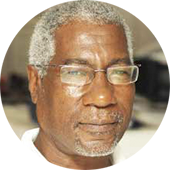
The long wait ended in relatively short time, but the endless anxiety and uncertainty Britons lived with since Queen Elizabeth II’s death on September 8 only shifted to a new phase on Monday, when the United Kingdom (UK) got its third prime minister in six weeks.
The new UK PM, Rishi Sunak, has taken over with a long list of Firsts: the youngest (at 42), the richest (with a vast personal wealth estimated at over US $750 million — more than twice that of King Charles III) and also crowned the ‘First Person of Colour’ to take charge at Number 10 Downing Street.
Sunak is also the first UK PM of Asian descent (his origins tracing back to India’s Punjab region) and he’s understandably being heralded to the skies in India, where he’s already been coronated ‘Rishi Raj’ by sections of the nationalist media, even though his grandparents were East Africans of Indian descent.
PM Sunak’s parents, a doctor and pharmacist, migrated to the UK and ran a successful family business to ensure their brightest son attended the best private schools in Britain, never mind the cost.
Sunak lived in the bright lights and fast lanes in California before his rise to the throne of UK politics, but it wasn’t easy.
Despite his immense wealth (a millionaire married to a billionaire Indian business heiress) his was a Westminster version of the proverbial ‘Stone that the builder refused’.
Prime Minister Boris Johnson highly trusted Sunak’s financial prowess and deliverability by appointing him Chancellor (Minister for Finance) in February 2020 and he was widely acknowledged as having done well with a popular and effective ‘Furlough’ scheme to help citizens through the COVID pandemic.
But while the Chancellor’s political stock went up with Furlough, PM Johnson’s headed steadily downward after it was revealed he’d hosted and/or attended ‘Lockdown Parties’ at Number 10 while the rest of the nation was forced to stay at home and away from restaurants, bars and pubs – or even funerals.
And The Queen was mourning under lockdown after attending her husband Prince Philip’s funeral sitting alone under COVID Social Distancing protocol restrictions.
It’s impossible to tell whether Sunak’s decision to resign as Chancellor had more to do with the earlier embarrassing exposure that his wife was not paying UK taxes on her external incomes under his watch or had decided back then to pull the plug on Johnson because he was lowering the ruling Conservative Party’s elections popularity stock.
Sunak’s resignation however ignited a series of events that eventually led to Johnson’s very-unwilling resignation — and revealed the width of the deepening divisions that had split the ruling ‘Tory’ party into those ‘for’ and ‘against’ Johnson, ahead of a succession race sure to even further deepen the widening chasm of internal disunity.
Sunak threw his hat into the ring and in the race to succeed Johnson and ended up facing Liz Truss, an unrepentant Johnson backer and former Foreign Secretary with 12 years Cabinet experience.
Sunak had enough support in the Tory parliamentary party, but the vote also included balloting by Conservative Party members across Britain, most of who saw and treated the ex-Chancellor as a traitor who’d stabbed Johnson in the back and created the crisis the party now faced, having to unite behind a less-popular leader.
Johnson had led the Tories into winning their record-setting parliamentary majority in the 2019 elections, which they still enjoy, but party supporters decided it was time for Sunak’s stab-in-the-back and reversed his earlier majority among Tory MPs by voting instead for Truss, despite her finance and economic proposals being very unpopular with the voting public.
British households were preparing to pay an 80% increase in energy bills as of October 1 and Truss had promised to help citizens pay, but she’s absolutely refused to increase taxes on earnings of multinational companies and the super-rich.
Enter PM Truss on September 6 to implement the costly Thatcherite-type ‘Trussonomics’ policies she’d campaigned on, appointing Kwasi Kwarteng, a Black Briton and personal friend, as the ‘First Chancellor of the Exchequer of Colour.’
Kwarteng presented a 53-million-Pound mini-budget on September 23 that was supposed to heal national economic wounds, but instead marked the beginning of his and PM Truss’ early end – and setting new records in UK history.
Kwarteng was fired one week later (October 14) after the markets revolted against the Truss Plan he’d presented, the Pound having descended to its lowest-low against the US dollar (at US $1.14), forcing the Bank of England to purchase enough government bonds to help shore-up the drowning ‘quid’.
Devaluation of the Pound to its lowest level was a breaking point for many Brits, leading to Truss’ exit through the revolving door at Number 10 six weeks after she entered, forced out by the overwhelming unpopularity of her economic policy as implemented by Kwarteng.
Truss lost her party’s trust and with public support dwindling, the century-old ‘1922 Committee’ (that selects candidates for the party’s leadership) called her in for her marching orders, forcing her resignation on October 20, as the shortest-serving UK PM since George Canning, who’d served 119 days in 1827 until he died of Tubercolosis.
Enter Rishi Sunak, the stone the party’s builders had refused by rejection despite his stark and dire warnings during the protracted leadership fight against Truss that borrowing to pay for growth was a sure recipe for national economic disaster – a warning repeated by the International Monetary Fund (IMF), but which those out to punish him chose to ignore.
Suddenly, the Tory builders wanted the rejected stone, now belatedly admitting ‘Rishi was right, all along…’
They were now ready to not just accept Sunak as a stepping-stone to lead the party closer to its next general elections victory, but also to be the next builder of Britain’s economic revival at its worst time — and the nation’s very future.












